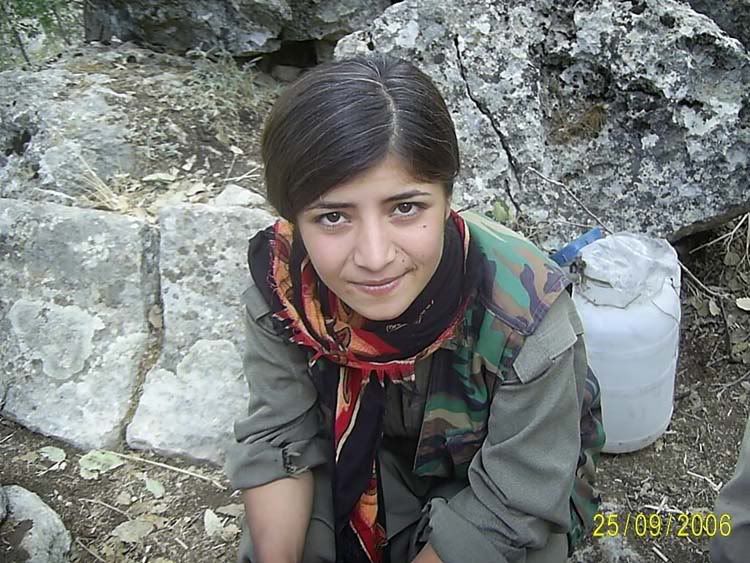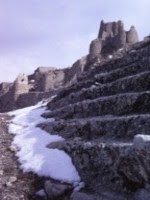Spreading Out, Hunkering Down

This place--Giresun, on the Black Sea Coast--is a long way from Kurdistan. The mountains are greener, the trees more plentiful, the summer heat not nearly so lethal. It is more like the Pacific Northwest than the Middle East. Fruits grow in abundance hereabouts. The Roman general Lucullus, according to legend, brought the first cherry tree back to Europe from this very port--then called Cerasus. But hazelnuts, not cherrries, now predominate. Turkey's Black Sea Coast is the Persian Gulf of hazelnuts. "The Turks control everything," a Washington State filbert grower once told me. "Every year, until they set the price they want, I have no idea whether or not I can make a profit." And it's not just nuts. That Italian olive oil that you bought last week? You don't really think it's Italian, do you? Or olive, for that matter. Don't be surprised if it contains a big glug of hazelnut oil from these same shores.
This is, in short, a province humming with commerce, the last place one would expect a guerrilla war to arrive. And yet it has.

Here is the map posted at hpg-online.com, the official website of the PKK's armed force, the HPG. Just your standard Mapquest item, but with a difference. The blue expanse is the Black Sea. At the far right of the map, past Hopa, you can see the frontier between Turkey and Georgia. Between the towns, hemming in the roads, are mountains. (If you think of Turkey as nothing but mountains, you won't be far wrong.) The map tack shows the location of the latest clashes between PKK guerrillas and the Turkish Army, near Gumushane, a major town on the highway between Erzurum and Trabzon. Previously they were directly southeast of Giresun--beyond, in other words, those peaks in the above photo. According to the PKK, 3 Army soldiers were killed and 4 wounded in the fight, which took place on 28 June. All in all, the PKK's "war tally" for June, just issued, claims 66 clashes across a wide slash of territory, with 158 Turkish soldiers killed, many more wounded, and a flurry of forest fires deliberately set by the Turkish Army. A PKK unit even attacked a police barracks in Hakkari province, in retaliation, they said, for police brutality against young Cuneyt Ertus during the Newroz celebrations.*
All the casualties, of course, are unverifiable, and since guerrillas rarely take and hold ground, the PKK themselves would have a hard time counting the dead. 158 is an improbable number. But numbers are not the point. The point is in the geographical spread. A PKK unit (or units) is operating near the shores of the Black Sea. Further south, near Erzincan and Tunceli, many other guerrillas have long been active. Add to these units further east, near Kars on the border with Armenia, and the geographical spread becomes amazing. From Mt. Ararat, at the Armenia-Iran border, to the mountains behind Iskenderun, on the Mediterranean, all of this is territory that has seen PKK-government fighting in the past six months. For a guerrilla army that moves solely on foot and supplies itself with hidden caches, this is astonishing. The PKK, which by the year 2000 seemed almost finished, has come back, with new recruits coming in all the time and plenty of angry, unemployed teenagers waiting in the wings. For this, as so many have stated so many times before, the Turks have no one to blame but themselves.
The guerrillas, meanwhile, are using the Internet for all it's worth--as long as, that is, their website doesn't succumb to vandalism by the Turkish government. Several new portfolios have recently been posted on the HPG website, and I recommend them to anyone curious about these people and their world. [Just go to hpg-online.com, and click 'Foto Galeri' on the right.] One photograph shows the late Halil Uysal, the German-born PKK film maker and photographer, sitting in a plastic-roofed shelter using a laptop connected, no doubt, to the Internet. In the background are other guerrillas working on other laptops. And these laptops and the websites they serve are fed by digital cameras, shooting both stills and video, as well as press releases, essays, and poems posted by men and women in the ranks.
Two videos in particular have shown up recently. The first shows an attack by some 150 PKK guerrillas, one of the largest they have ever made, on a Turkish military outpost in the mountains of Semdinli, near the Iraqi border. This happened in May. In the video we can see the guerrillas, men and women, hiking through the mountains. We see their mules and their weapons, but also we see the terrain. On a mountainside a pillar marked "TC" (Turkiye Cumhuriyeti: Republic of Turkey) denotes the border. As the guerrillas prepare to attack, with the target far below in a gorge, and a gun emplacement high above it to provide covering fire, we get glimpses of the scenery: naked spires flecked with snow, a Yosemite-like rock wall that must be thousands of feet high. As night falls and the attack begins, the video becomes more frenetic: streams of tracer rounds dance about; a shaky handheld camera moves here and there; an ammunition store in the army outpost is burning out of control. It was, claimed the PKK, their first "aerial" attack.
The second video is shorter, more intense, and more brutal: a piece of combat porn rather than a revealing look behind the headlines. Amid a din of small arms fire, in broad daylight, two big army trucks are ambushed on a mountain road somewhere in Turkey. The first comes round a bend into a wall of bullets. It veers off the road and plunges into a ravine directly below the photographer, its wheels pointing skyward. Immediately the camera looks up. Another truck is coming around the same bend. As the lens focuses and zooms in, we can plainly see the pocks and splintering of multiple hits on the front and windshield of the vehicle. The truck stops, and for some reason, amid this hail of bullets, the passenger door opens and a soldier falls out onto the road. Immediately he picks himself up, but by this time the driver has put the truck in reverse and is backing wildly away. The soldier, alone and in the open, runs for his life. All around him the road is erupting in spurts of dust. He jinks left, then right, then left again, his feet bracketed by gunfire as he chases after the truck. He makes it off the road into the low brush, where by now the truck is even farther away, weaving in reverse amid the scrub. And there, with no hint of the man's fate, the video ends.
And who perpetrated this violence? Well, it could have been someone like this:

Or maybe this guy.

"Defeat this!" he seems to be saying. After all, this war is at 24 years and counting. Meanwhile, as of 3 July 2008 General James Cartwright, vice-chairman of the U.S. Joint Chiefs of Staff, is in Turkey to confer with the generals on intelligence-sharing, weapons-buying, and "rooting out" the PKK. Just fifteen minutes from my house, at the south end of Boeing Field, expensive new Boeing AWACS planes with "Turkish Air Force" printed on their sides are being prepared for just such service. As if there is any mystery. As if any ordinary person couldn't tell you that if you treat your citizens decently, respect who they are, and become the European democracy that you claim to be, perhaps you'd get somewhere in "rooting out" these problems.
Ah, but I am so naive. It's so much easier just to buy AWACS planes.
---------------------
*Revenge seems like the last thing Cuneyt would need. He needs therapy for his mangled arm--and anonymity.
---------------------
[Cross-posted at progressivehistorians.blogspot.com]


1 Comments:
Great article! Thank you! :-)
Post a Comment
Subscribe to Post Comments [Atom]
<< Home